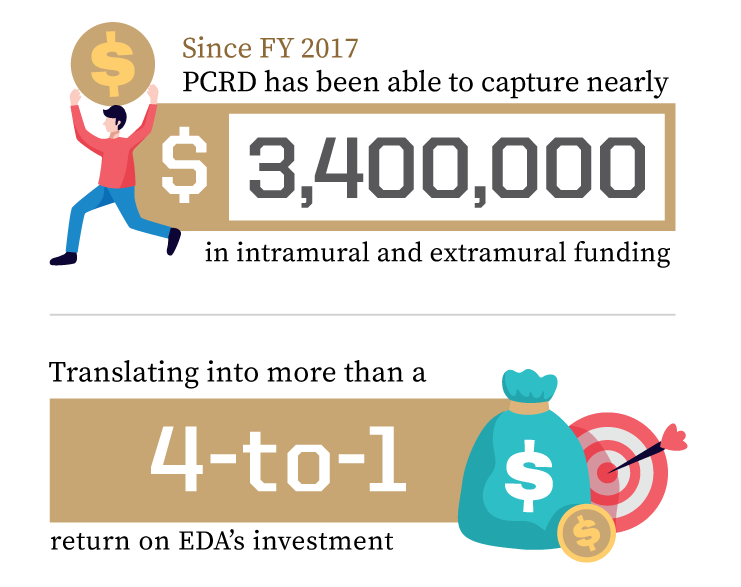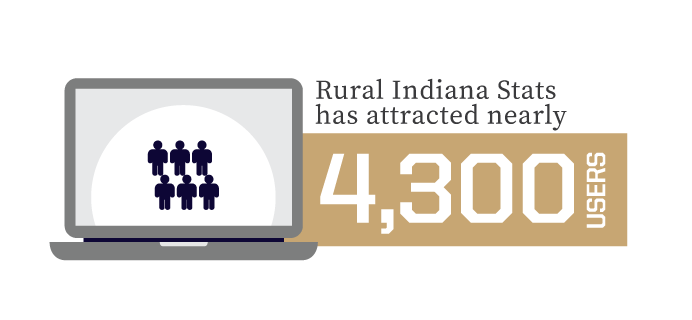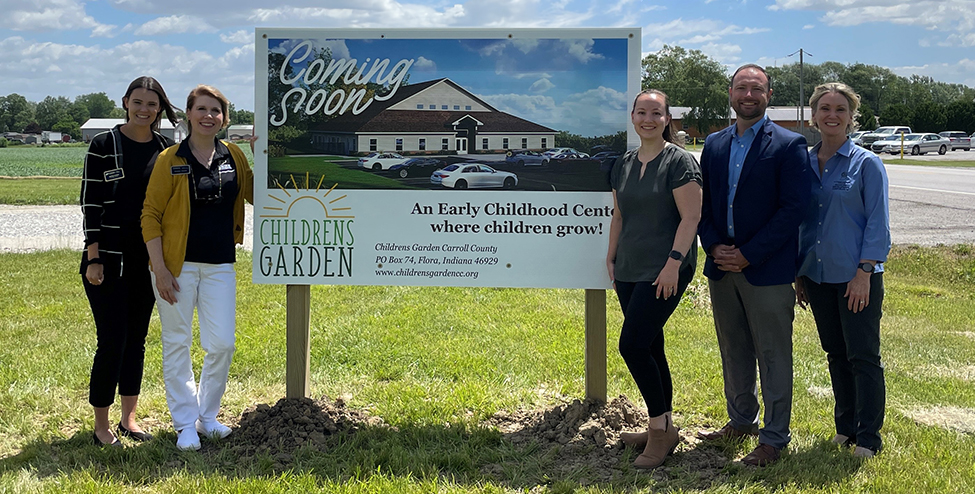EDA University Funding: The Catalyst for Advancing Regional & Local Development Work

I’ve had the opportunity to give thought in recent months to the critical role that EDA’s investment in University Centers (UCs) has played in advancing the work of the Purdue Center for Regional Development (PCRD) over the years, an entity that has had the privilege of serving as Indiana’s UC for the past 15+ years. It was in 2016 that we reached out to colleagues at Ball State University’s Indiana Communities Institute and invited them to join us in the preparation and submission of a new EDA UC application. The establishment of a Joint EDA UC Center seemed to be the right thing to do in light of the complementary work we were undertaking in support of the needs of distressed communities, counties and regions in Indiana. Thankfully, the Chicago EDA Office embraced this new partnership and awarded a five-year EDA UC grant to the Joint Purdue-Ball State EDA UC in the fall of 2016.
While it hard to believe that it has been 4 ½ years since the Purdue-Ball State team started its partnership as a Joint EDA UC, what is even more astonishing is the expansive work that has been achieved over this period of time by our UC team. I’d like to highlight some of these important activities in this brief article, not so much to “brag” about these achievements, but rather to demonstrate the valuable and impactful role EDA UCs play in guiding and supporting the work of state agencies, economic development districts/regional planning organizations, and local community/economic development entities in their states, and beyond. So here goes!
Leveraging EDU UC Funding
The funds awarded by EDA in support of our University Center work has represented core, multi-year funding, financial support that has been vital to our capacity to respond in a timely fashion to the needs of the many regional planning organizations in the state. But these funds have done more. They’ve positioned our UC to compete and successfully secure grants/contracts that align with our UC plan. As a result, we’ve been able to accelerate our work in the four priority areas articulated in our UC scope of work. Since FY 2017, PCRD has been able to capture nearly $3.4M in intramural and extramural funding, translating into more than a 4-to-1 return on EDA’s investment in our Center.
Expanding Access to Timely Data
One of the major strengths the PCRD has enjoyed since its creation in 2005 has been the quality of its data-related activities and products. Thanks to EDA funding, along with investments made by state agencies and organizations, we have been able to develop and enhance data platforms that are proving valuable to a variety of stakeholders in the state. One of the products is Rural Indiana Stats, a site that is serving as a “go to” source for such state agencies as the Indiana Office of Community and Rural Affairs (OCRA), the Indiana Housing and Community Development Authority (IHCDA), the Indiana State Department of Agriculture (ISDA), and the Indiana Economic Development Association (IEDA). The site has attracted nearly 4,300 users over the past year.
A second key resource produced is the IARC Data Dashboard, a site that showcases major economic and demographic variables for each of the regions that are members of the Indiana Association of Regional Councils (IARC). One of the valuable features of the dashboard is the ability of regional planning organizations and others to undertake quick comparisons between regions or to aggregate information for multiple regions.
A third data product worthy of note is the Digital Divide Index, a resource that assesses the nature of the digital divide in places across the country, be it due to limited access to broadband infrastructure and/or the result of the socioeconomic characteristics of their population. This site has resulted in people and groups across the country using this online resource to guide their efforts in strengthening broadband access and adoption in unserved and underserved areas in rural and urban America. Since 2017, more than 80 requests from several states were made for this dataset ranging from state agencies to nonprofits to institutions of higher education.
Enhancing Regional and Local Capacity
One of the main problems communities and regions often experience is having in place a broad-based group of people and organizations that are willing to work together to plan and advance the long-term vitality of these places. A related concern is how to secure the help of a trusted support system that can offer the mix of tools, training, coaching and technical assistance needed to foster the development and implementation of sound local and/or regional plans.
“Capacity-building” has served as critical element of our UC efforts, and two programs are especially demonstrative of our work in this area. The first is the Hometown Collaboration Initiative or HCI, a program targeted to small communities with less than 25,000 population in the state. Working in partnership with the Indiana Office of Community and Rural Affairs, the Purdue-Ball State team worked in 19 communities and guided them in the implementation of economic development, placemaking or leadership development programs in their sites. The most significant aspect of the HCI is not so much the completion of a project by a local HCI team but rather the civic spirit that HCI helped rekindle, a spirit that has resulted in the continued engagement of a wide array of people in groups who are making positive changes in their hometowns.
The second is the Rural Economic Development Innovation (REDI), an initiative launched in collaboration with USDA Rural Development and the University of Kentucky’s CEDIK. Over the past two years, our team has provided training and technical assistance to nine sites in the North Central and Southern regions of the U.S., resulting in the development of comprehensive community or regional economic development plans in eight of the nine communities/regions to date. Some of these sites have already secured grants to promote broadband/e-connectivity, Opportunity Zones, workforce development, and critical mental health services.
Building on Regional Assets
It’s not uncommon for our UC to focus part of its work on supporting the development and updating of CEDS documents by regions within and outside of Indiana. This includes producing up-to-date analysis of a region’s competitive strengths, particularly with respect to important industry clusters. But of our commitments over the past 4 ½ years has been to complement our industry cluster work by tending to the needs of small businesses that are a vital part of the fabric of Indiana regions and communities. As such, we’ve launched new programs (in partnership with Purdue Extension’s Community Development Program) targeted to small-to-medium-sized businesses, especially in rural Indiana. These programs include Economic Gardening, Business Retention and Expansion, Business Networks, and Digital Ready Businesses.
Strengthening Ties with Regional Planning Organizations
One of the most significant outcomes from our EDA UC work has been the strong bond that our UC team has developed with the members of the Indiana Association of Regional Councils (IARC). IARC members played a central role in shaping the substance of the EDA UC proposal that we submitted to EDA in 2016 and they are continuing to guide the focus of our work even to this day. The trusting relationship we have developed over the past several years has resulted in regions often looking to us to complete smaller, shorter-term projects in their region, or tapping us to produce data tailored to their specific grant applications to EDA or other relevant agencies. Furthermore, it is IARC members who were instrumental in guiding the creation of the Regional Academy, an effort spearheaded by our Ball State UC colleagues. The Regional Academy is delivering a host of training programs that are strengthening the skills of existing regional leaders and helping to expand the pipeline of new regional leaders that will needed in the future.
Concluding Comments
I’ve been honored to work in partnership with the Chicago EDA Office staff and EDA UC colleagues across the six-state Chicago region over the past eight years. What I’ve come to appreciate is the collective commitment by the UCs to produce quality applied research that guides the work and investment of local/regional planning organizations, state agencies, and others. One thing I know for sure is that most UCs are equally committed to outreach and engagement. Doing quality applied research is vital, but so too is working hand-in-hand with regional planning organizations, community leaders, and others to position these places to achieve economic vitality and sustainability over the long-term. My hope is that this brief article has affirmed the value of our UC work in Indiana, and the valuable contributions that UCs are making in the EDA Chicago region and in other EDA regions across the nation.

Dr. Bo Beaulieu is Professor Emeritus of Rural and Regional Development, Purdue Center for Regional Development and the Department of Agricultural Economics. Bo has played a... read more






